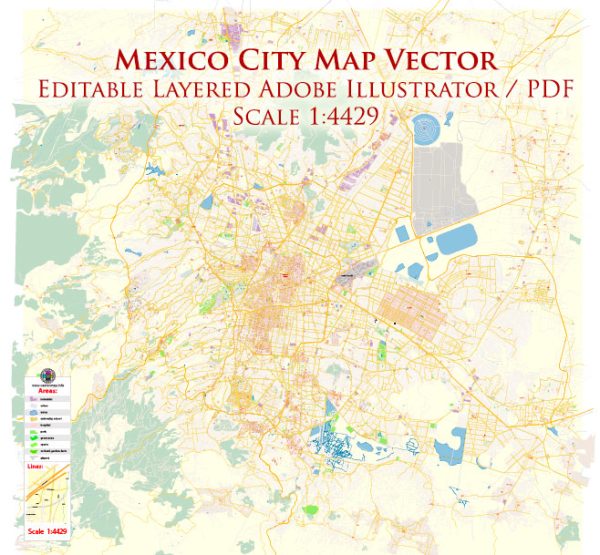Mexico City, one of the largest and most populous cities in the world, has a comprehensive and diverse transportation system to meet the needs of its residents and visitors. The city’s transportation infrastructure includes:
- Metro: The Mexico City Metro is one of the largest and busiest metro systems in the world. It consists of multiple lines and covers a significant portion of the city. It’s a fast and affordable way to move around.
- Metrobús: Metrobús is a Bus Rapid Transit (BRT) system in Mexico City. It operates in dedicated lanes, providing a quicker and more reliable bus service.
- Buses: The city has an extensive bus network that covers areas not served by the metro or Metrobús. Many different companies operate bus routes, and you can use a contactless card called “Tarjeta de Movilidad Integrada” to pay for bus rides.
- Trolleybuses: Trolleybuses are another form of public transportation in the city. They run on electricity and are more environmentally friendly.
- Cycling: Mexico City has made efforts to become more bike-friendly. There are bike lanes in various parts of the city, and a public bike-sharing program called “Ecobici” is available for short trips.
- Taxis and Ridesharing: Taxis are readily available, but it’s essential to use authorized and registered taxis for safety. Ridesharing services like Uber and Didi are also widely used.
- Light Rail: There are several light rail lines connecting various parts of the city, including Xochimilco, Tasqueña, and more.
- Suburban Trains: The city has suburban train lines that connect the city center to nearby municipalities, such as the Tren Suburbano which runs to the north.
- Airport Transport: Mexico City International Airport is connected to the city center via the metro and buses, providing convenient access for travelers.
- Walking: In some areas, particularly in the historic city center and tourist districts, walking is a popular and practical mode of transportation.
- Driving: While driving is an option, the city’s traffic congestion can be quite challenging, and parking can be expensive and limited in some areas.
- Electric Scooters: Electric scooters are available for rent in certain parts of the city. You can unlock them using smartphone apps.
- Cable Cars: There are also cable car systems in some parts of the city, such as the “Mexicable” in Ecatepec.
It’s important to note that Mexico City’s transportation system can be crowded and at times challenging to navigate due to the city’s size and traffic. It’s essential to plan your routes in advance, especially during rush hours. Additionally, be aware of any local transportation regulations and safety precautions to ensure a smooth and safe experience while using the various modes of transportation.






 Author: Kirill Shrayber, Ph.D.
Author: Kirill Shrayber, Ph.D.